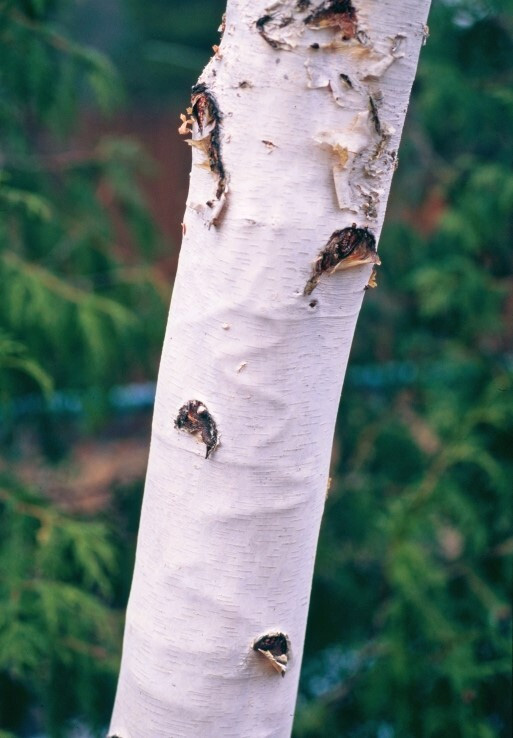Bronze Birch Borer (Agrilus anxius)

Figure 1. Bronze birch borer adult. Photo by S. Valley.
Host
Birch trees.
Symptoms and Damage
Girdling injuries cause dieback of limbs in the crown. D-shaped exit holes will be present on trunks and branches on parts of the tree that are unshaded. The infestations will also cause raised ridges in the bark. The galleries that are formed from boring underneath the bark make a zigzag pattern and are packed with sawdust.

Figure 2. Bronze birch borer damage on trunk. Photo by S. Katovich.
Life Cycle
Females lay eggs in bark crevices or in other protected sites. Egg laying begins in the upper crown of the tree or in branches (usually less than a half-inch thick) and then continues to thicker portions of the tree. The eggs will hatch in about two weeks. The larvae will overwinter within the cambium and will pupate in early spring. The adults will exit the trees in late May or early June. There is one generation per year.
Management
Birch are often stressed, making them more susceptible to the borer. Provide a large mulched area around the tree to conserve moisture and to protect the root system. Any limbs showing signs of infestation should be pruned out prior to beetle emergence in the spring. Preventive insecticides can be applied as trunk sprays and should be timed to coincide with egg laying in the summer. Systemic insecticides with the active ingredients imidacloprid or dinotefuran can also be applied in the spring to prevent future infestations.
Further Information
To learn more about the topics discussed on this page, contact the Schutter Diagnostic Lab. If you suspect an infestation on your property, contact your local extension agent, the Schutter Diagnostic Lab at Montana State University, or the Montana Department of Agriculture.
This fact sheet is also available as a printable PDF (240KB).
Disclaimer: These recommendations are provided only as a guide. It is always the pesticide applicator’s responsibility, by law, to read and follow all current label directions for the specific pesticide being used. The authors and Montana State University assume no liability resulting from the use of these recommendations. The Montana State University Extension Service is an ADA/ EO/AA/Veteran’s Preference Employer and Provider of Educational Outreach.
